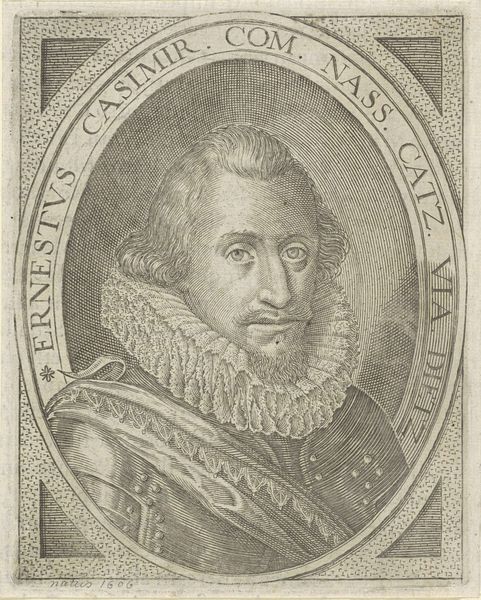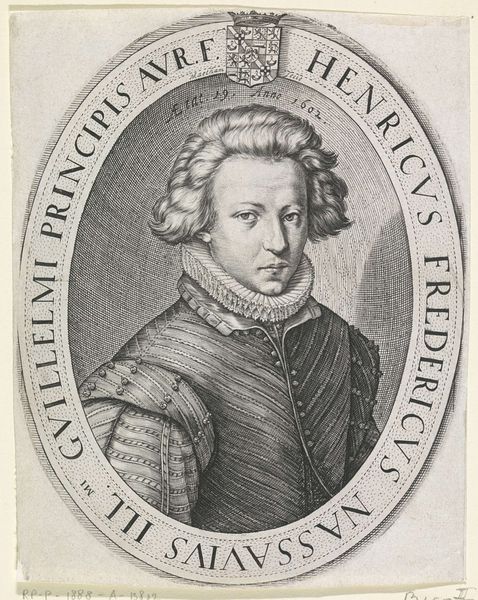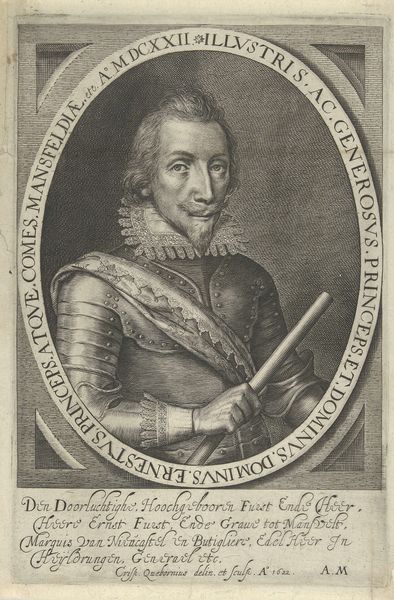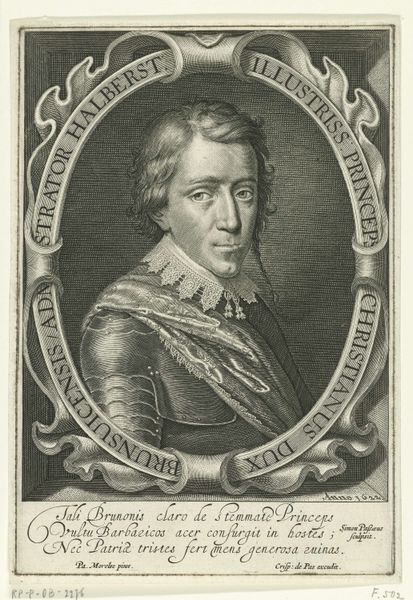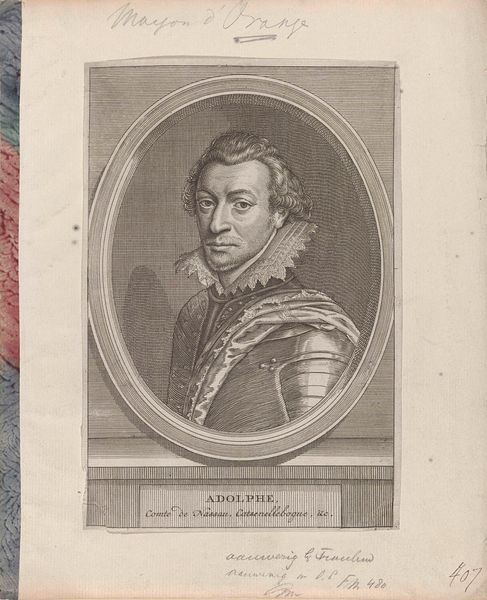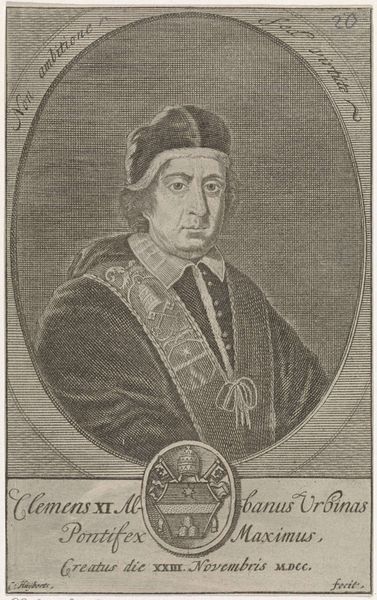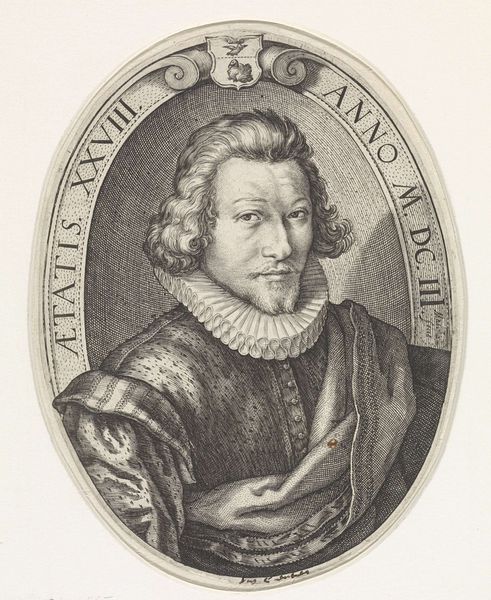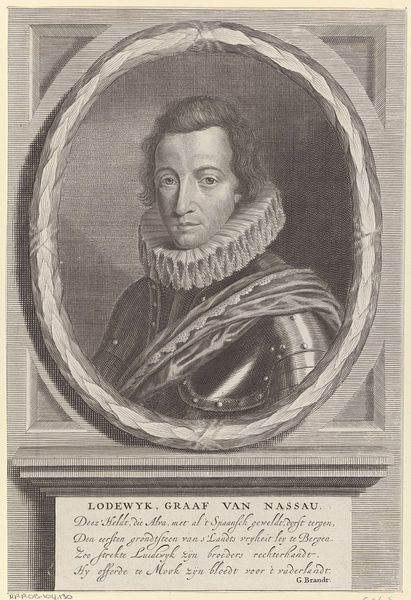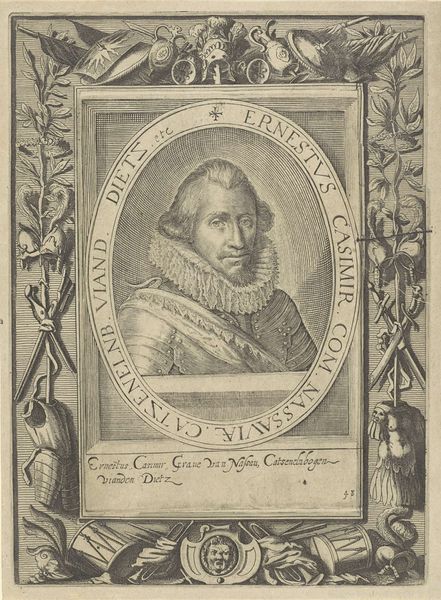
etching, engraving
#
portrait
#
baroque
#
etching
#
portrait drawing
#
history-painting
#
engraving
Dimensions: height 176 mm, width 132 mm
Copyright: Rijks Museum: Open Domain
Curator: Here we have an etching of Adolf, Count of Nassau-Siegen, likely produced between 1605 and 1699, attributed to an anonymous artist and residing in the Rijksmuseum collection. Editor: It's quite striking! The subject's face is very detailed, contrasting with the swirling lines of the oval frame and the almost mechanical lettering surrounding him. The armor feels less decorative and more like a standard of his class. What's your interpretation? Curator: I see this image as a powerful statement about status and lineage during a turbulent period in European history. Etchings like this were often commissioned as propaganda tools or status symbols. Notice how Adolf's name is prominently displayed. The inscription serves as an important function: declaring his noble lineage to reinforce the family's claims of power. What does the style say about that purpose? Editor: Baroque! The flamboyance, the details... the lines convey status through ornamentation. It feels like the image is performing its identity through its execution. Curator: Precisely. The image's public role extends beyond mere representation. Consider the etching medium itself, enabling mass production. Does this suggest anything to you? Editor: Wider distribution meant wider reach. By creating multiples, images of power become more democratically available, even as they reinforce the hierarchies that concentrate power among the few. So, portraiture could shape perceptions of leadership and influence political discourse. Curator: Exactly! It’s not just a picture, it’s an artifact deeply embedded in social and political history. What have you learned through this object? Editor: It makes you aware that seemingly simple works, even printed portraits, can become complex markers of the politics that shaped them. It prompts me to question the role of the contemporary museums and their roles. Curator: An essential point. Understanding how museums frame our perceptions is crucial. Thanks for prompting me to also re-examine how institutional memory shapes how the masses may reflect on these portraits.
Comments
No comments
Be the first to comment and join the conversation on the ultimate creative platform.
